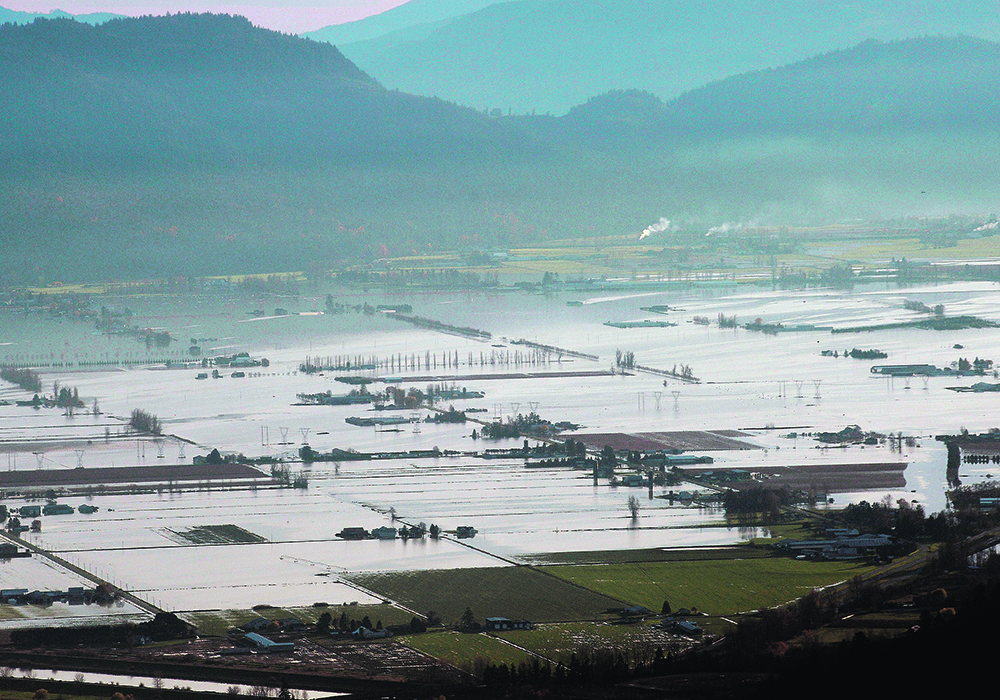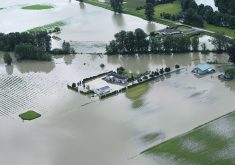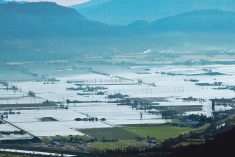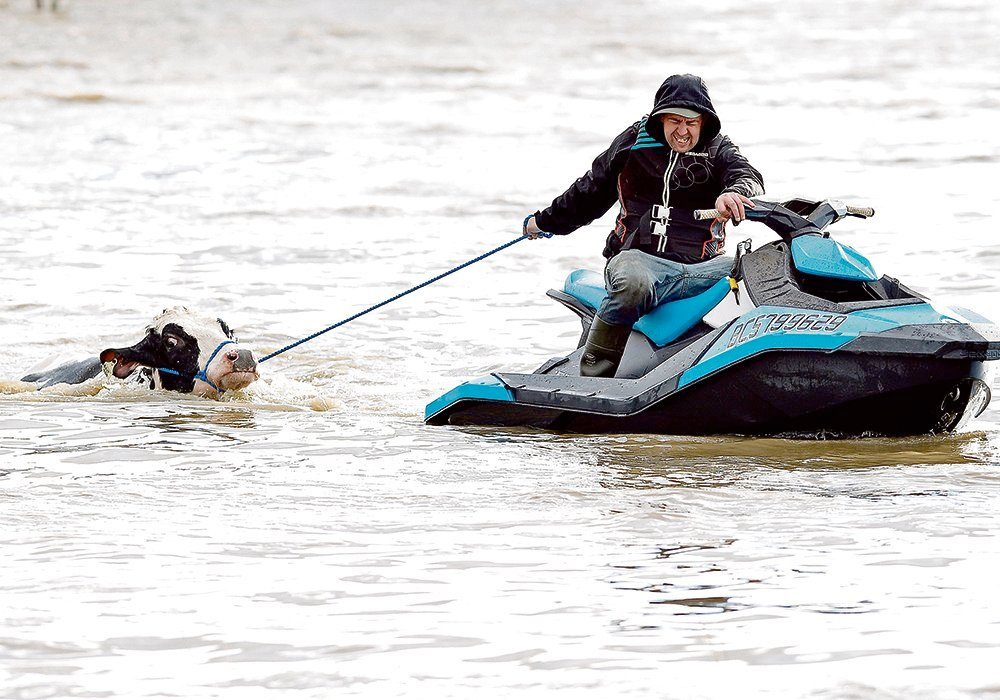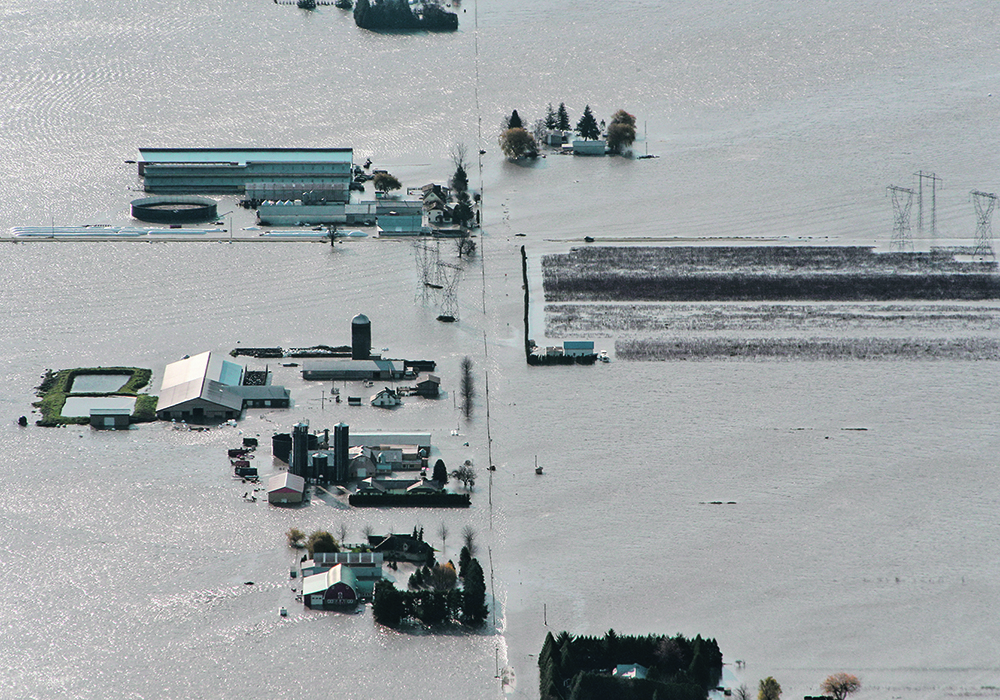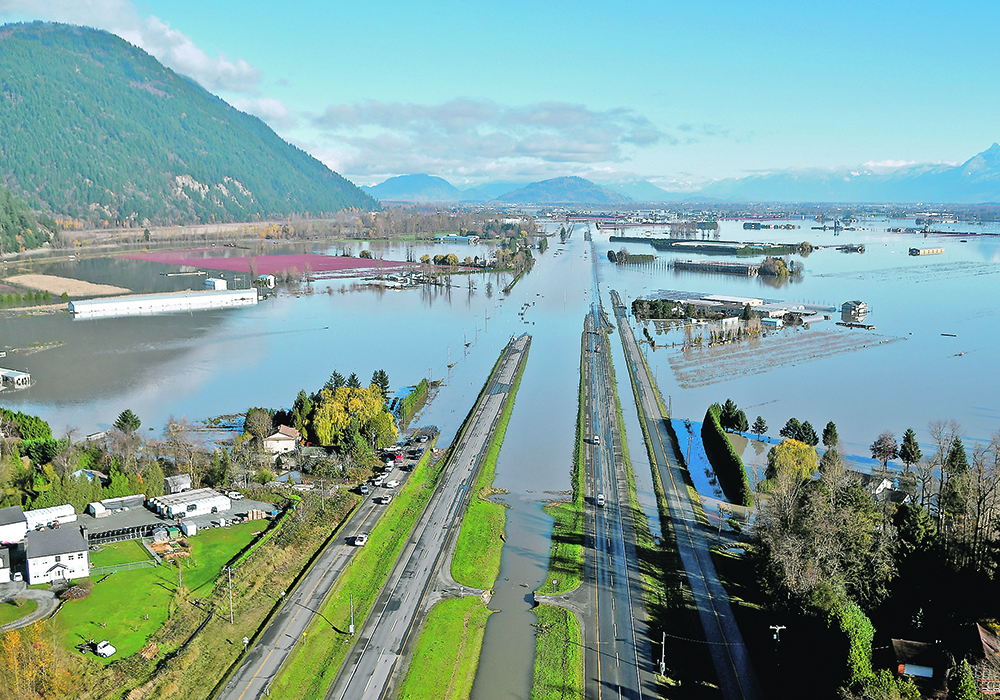Farmers in the British Columbia area hit hard by flooding in late 2021 are still waiting to learn how another such flood will be prevented.
The flood happened after southern B.C. and northern Washington State were deluged by 154 millimetres of rainfall in 24 hours on Nov. 14, 2021. Rivers overflowed and eventually broke dikes that held water out of the drained Sumas Lake near Abbotsford, home to some of the province’s largest poultry and dairy farms.
Veterinarian Lisa McCrea was in the middle of the disaster, dealing with the AgWest Veterinary Group’s flooded clinic and embryo collection facility and helping her fellow veterinarians assist farmers in and out of the flood zone.
Read Also

More factors affecting winter weather
When you combine a weak La Niña, early Siberian snow, and a warm northern Pacific, it’s easy to see why long-range winter forecasting is so complex.
She told the recent Western Canadian Dairy Seminar in Red Deer that there were numerous lessons learned about the resilience of people and livestock, but also in being prepared for emergencies.
McCrea’s experience in managing animals and evacuations was repeated across the Sumas prairie as flood waters rose.
The AgWest Veterinary Group runs a barn where it flushes embryos and conducts other genetics work with valuable cattle.
Its offices were inundated on the morning of the flood and during the day more of the area was under water. McCrea tried to stay with the animals in the barn, but by 9:30 p.m., there were three feet of water in the barn and she was evacuated by kayak.
“At that time, the water was coming in and it was literally just like a river flowing by the clinic door,” she said.
By the next morning, roads were barricaded as she and others tried to return to the barn. It took two hours to get through the barricade because it was set up by the province and responsibility for access was passed between the municipal police chief and fire chief.
That led to one major lesson for rural communities at risk of flooding – know jurisdictions for decision making.
Once McCrea and her colleagues were through, they tried to get a tractor and other vehicles through the water, which proved impossible. The next option was to make the cattle swim. This worked for some, but others circled back to the barn.
A call went out to area farmers with boats and jet skis to help lead the cattle to safety.
“That took about probably six to eight hours that we were all standing in ice-cold water throwing halters on these animals and leading them out to the boats and then hauling them out into the trailers on the other side,” says McCrea.
Some older donor cows would start to swim but then circle back to the barn. By the end of the day, the water had started to recede, so the animals were fed, bedded and left.
The next day, with breaches in the dikes, water was flowing into the old Sumas lake bed and away from the clinic and barn, and people were able to get a tractor and trailer to move the remaining animals.
“Along with relocating our clinic, some of the vets were helping rescue the rest of the animals and also servicing the rest of our clients that were outside of the Sumas area who weren’t affected by the flood that also still needed their animals taken care of.”
There were about 23,000 cattle in the flooded area, and about 6,000 were relocated. Among the 17,000 that remained, some were affected more than others.
Dairy farms operate with precision, and electrical and water services are critical as are roads to deliver feed and milk. For many, those systems broke down.
McCrea gets emotional as she talks about the resiliency of farmers and livestock.
“The wives and the children would leave in some instances to go to safety, leaving the husbands behind to do the chores by themselves for days on end,” she said.
There was a 72-hour period in which farmers desperately worked to move cattle as quickly as possible.
“They fought roadblocks to get into Sumas to help. When they could no longer get there by truck, they figured out a way to hook up their trailers to tractors and when they couldn’t do that, they brought in boats,” says McRea.
The total damage estimate for dairy farms in the flooded area ranges from $21 to $100 million, and the effects will be felt for years.
Milk had to be dumped because trucks couldn’t get through. Cows had to drink flood water where water systems were shut off. Feed had to be delivered by helicopter. Round bales floated away from where they were stored and ended up in blueberry fields.
Biosecurity was thrown out because survival was the driving motivation. With 30 per cent prevalence of Salmonella Dublin in B.C., McRea says herd mixing was a problem.
Young stock were more affected because milking facilities were more likely to be built on higher ground.
Cows stood for hours or days in three feet of water, and remarkably, McRea says many of them survived and continue to thrive.
Communication is key and traditional systems such as broadcast news weren’t as effective for people out doing the work. Facebook groups became important because they could be updated instantly.
McCrea says text-based alerts are a good option, and in Washington State, warning horns blared well before the floods hit. Those don’t exist in B.C.
There are many stories of resilience.
An 11-year-old donor cow in the AgWest reproductive barn was due to be bred on the day of the flood and McRea got that done as they were standing in water.
“She spent all night in three feet of water,” and the next day “she swam through that water like a rock star.”
The next week, the cow gave McRea the best embryo flush she’d ever produced and a couple of months ago, one of the embryos developed into a high-genomic potential heifer calf.
At AgWest Veterinary Group, life has returned to nearly normal after being out of the clinic for almost a year. However, the emotional toll and worry about the future continue.


